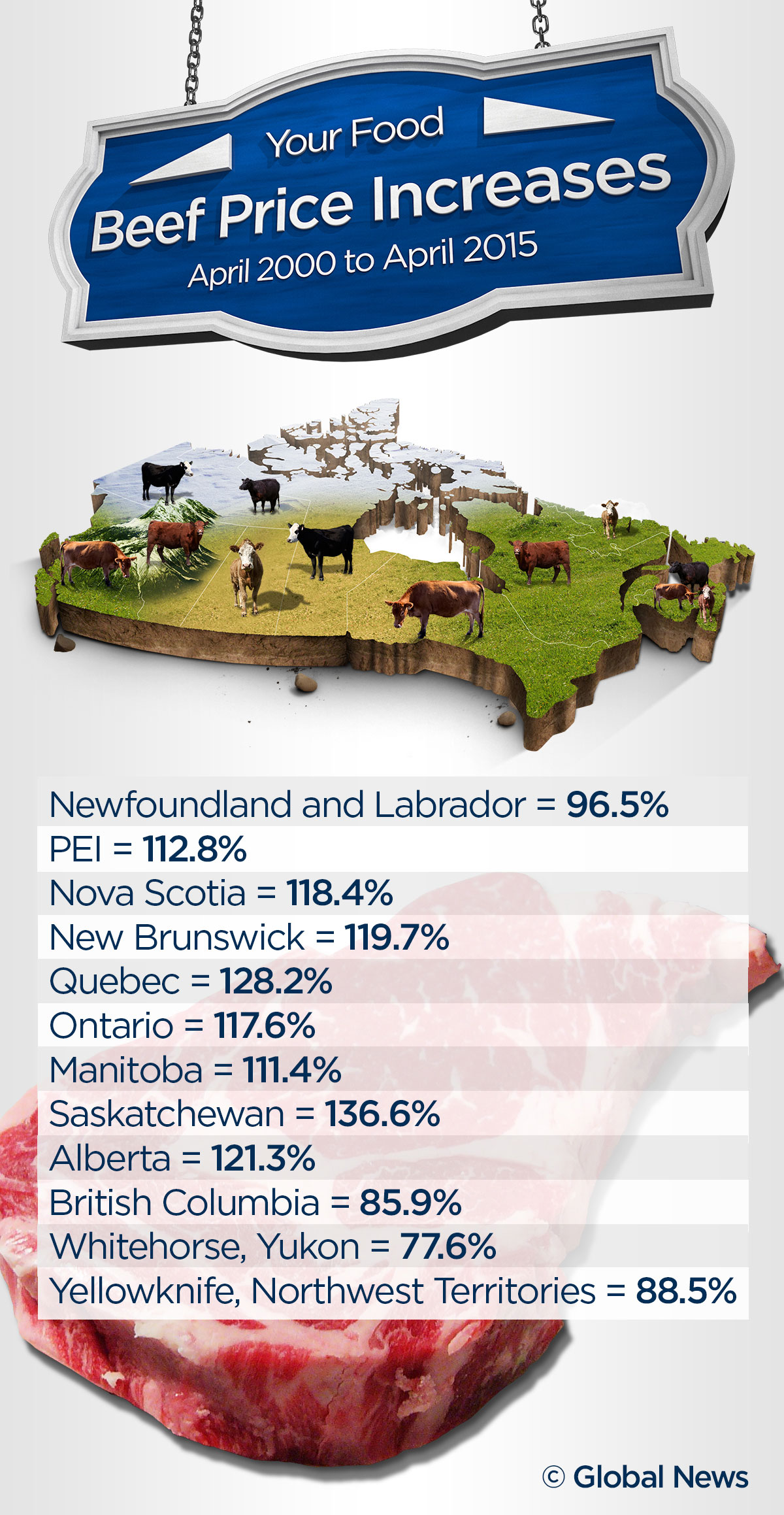WATCH ABOVE: Feel like you’re paying way more for food than you used to? Well, you may be surprised which foods increased the most over the last 15 years according to Statistics Canada.

Anyone who’s been to a grocery store lately likely has noticed their weekly bill creep up and up, as food prices continue to rise.
Inflation numbers released by Statistics Canada last month showed that Canadians paid 3.6 per cent more for food in April 2015 compared to the same month a year earlier. The rise was led by an increase in meat prices, up 11.2 per cent.
But a more detailed dig into StatCan’s numbers show that there are some types of food rising way more than others, and where you live in the country affects how much of a jump you’ll see.
READ MORE: Canadians care more about food price than taste, poll shows
In the past two years, the price of beef has risen 30.5 per cent. Fresh and frozen beef has increased by a whopping 117 per cent since April 2000.
Also in the last two years, pork prices have increased by nearly 23 per cent, ham and bacon is up 18.5 per cent, and fresh or frozen fish has increased by 14 per cent.
Those living in Saskatchewan and Alberta are most likely to feel the pinch of rising beef prices, which have gone up 136 per cent and 121 per cent in the past 15 years, respectively.
Why fresh food is getting more expensive
You can blame the lower loonie, in part, for the spikes on your grocery bills.
Despite seasonal, local foods flowing into the produce aisles this time of year, most of the produce purchased by Canadians comes from outside the country or is bought and sold in U.S. dollars.
And with the loonie hovering around 80 cents US, many grocers have passed on those higher wholesale costs to the customer.
Researchers at the University of Guelph forecast the price of vegetables to climb by 5.5 to 7.5 per cent through 2015. Fruits and nuts were forecast to rise by 3 to 5 per cent.
“We do import a lot of fruits and nuts, so that’s one category which will be affected by a weaker loonie,” Sylvain Charlebois, professor at the University of Guelph and co-author of the university’s food price report, told Global News earlier this year.
How to offset rising costs
One way to keep your grocery bills down is to buy seasonally and locally.
“The case for buying local is getting stronger every single day,” said Charlebois. “We do expect the loonie to drop even more and so for local, domestic farmers it’s certainly music to their ears because even though their price-point will probably be still higher than imported products, that margin is slowly shrinking, giving them a chance to make a case before consumers.”
Despite the massive jump in price for some items, not all foods are rising in cost across the board.
The cost of chicken was down six per cent in April, compared to the same month two years earlier. Apples, breakfast cereals, milk and cheese were other items that also saw a decrease in price over the two-year span.
Other tips for saving on fruits and vegetables include growing your own, re-growing vegetables, and looking for imperfect produce at a reduced price. See the full list of money saving tips here.






Comments